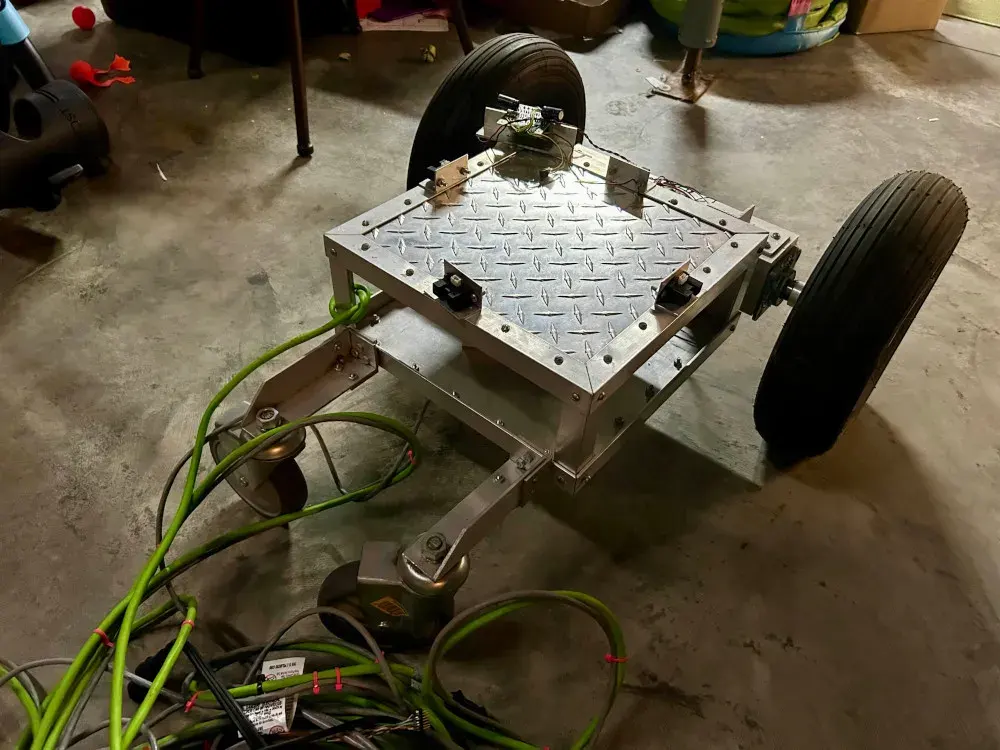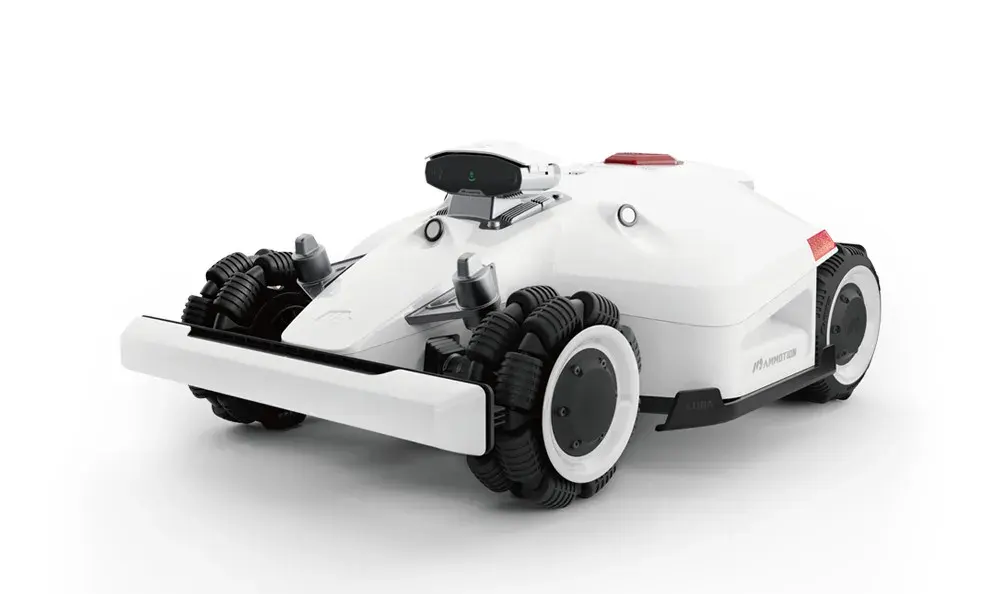
Past
Nearly 20 years ago, in the fall of 2004, I was faced with the question of what to do for a senior design project for my undergraduate degree in Computer Science. Inspired by the DARPA Grand Challenge, and along with 7 friends from Electrical Engineering, Computer Engineering, and Computer Science, we formed a team to build an autonomous vehicle. Today, this sounds commonplace, but at the time it was still pretty new. Without the funding to buy an off-road, the sensors necessary to recognize the messy world of non-solid surfaces1, or the cost of the computing equipment to manage all of the data and necessary calculations, we turned to a different problem: interior mapping.
In 2004, the Roomba was still relatively new and naïve. It only had random patterns that tried to cover an entire space over time using random turns on collisions. We had some different ideas. We wanted to be able to build a 2D map of a floor and be able to navigate to arbitrary points on the map. And we wanted to do it without needing to collide with edges.
We split up the work into high- & low-level hardware and software and went about defining our interfaces. We recognized that with the appropriate interface definitions, we could swap out various components with more capable systems as the budget allowed. To get us started, we bought a couple of tiny computers and some sonar range finders. Our target environment was the halls of the college, and we made a decent enough case that the idea could be transplanted to hospitals, allowing for on-floor autonomous transport of material.
For reasons completely outside of our control, we never quite got the whole system working as we wanted. There were no problems with that for the class because the professors were already impressed with what we had accomplished.
But the idea of autonomous vehicles that could perform everyday tasks has stuck with me. I watched as Roombas improved with collision avoidance mechanisms, autonomous vehicles could do multiple-object tracking, and more. But one area stood out among others: lawn-mowing robots.
I live on a little over half of an acre of land that may need to be mowed twice a week during the peak growth part of the year. It takes a considerable amount of time to mow with a push mower, and I don’t have the space to keep a riding mower. As I saw robot mowers come onto the scene, I was intrigued. But the prospect of burying a guide wire was not great for the size of the property and was complicated by a fence that is inset from the property lines (so I have to mow on both sides). Not to mention that there are some steeper hills, and many of the machines could not handle it. The first few generations of machines were great for small yards, but were no match for the ‘corner cases’ of my yard.
Present
But then came the Luba 2 from Mammotion2. It was not the first machine without guide wires, but it was the first one that combined GPS navigation with the hill management, multiple sensor types for safety and collision avoidance, an adjustable height deck for my cool-weather grass, and could cover my lot size while being priced on par with a (higher end) consumer riding mower. Other machines that covered some of my criteria were available and priced 2-3x, putting it well outside of my price range.
And now, you can say hello to Mowana3. We’ve had her for about 2 months now and it has been great. I cannot say that the system is ready for 100% hands-off operation, but I like to tweak and tune paths for optimal operation, so it works well for me. We had a long wait for her to arrive, but it has been worth it. I still need to figure out a way to automate letting her out of the fence without letting the dog out as well, and we’ll have to see how she handles the wet spring and the fall. But already, I’ve been able to do so many more outside chores and just let her do her thing.
One other piece that made the Luba2 stand out for me was the path planning pieces. Perhaps I’m a bit partial to this part since that was part of my responsibility with the senior design project, but I really like the fact that the Luba2 does planned, ordered paths instead of random paths.
Future
However, there are some things that I hope improve. I’m generally not a fan of heavy reliance on cloud services for physical devices. As it stands right now, there is no publicly defined API to controlling the machines from Mammotion. There are some projects to interact with the robot over BLE that allow some level of local monitoring and control via Home Assistant. The existing capabilities are nice, but no where near the level of being able to replace the cloud services if, for instance, the company goes out of business or just decides to stop supporting a given hardware platform. Perhaps I will be able to contribute to an advancement in this space, because there are some path planning things I would really like to experiment with!
If you’re interested to know more, or have some general questions, hit me up on mastodon. Or if you’re a neighbor and see me out: stop by and chat! Hopefully your dogs won’t be too scared. Ours has gotten used to her after a little bit of time. I’ll be happy to schedule bringing her out and parking her for the dogs to sniff if you want!

Footnotes
-
Even some of the nest LIDAR sensors at the time had a hard time with low-lying dry shrubs in the desert and would confuse vehicles to the point of not being able to proceed. ↩
-
This post is in no way sponsored, but I would be happy for it to be if anyone from Mammotion sees this! ↩
-
It’s a bit of a rite of passage to name your mower. Of course, being a Disney fan and having kids in the target market for Moana, once this option came up we stuck with it. Decorations are the next common step and we’re still working on that one. ↩